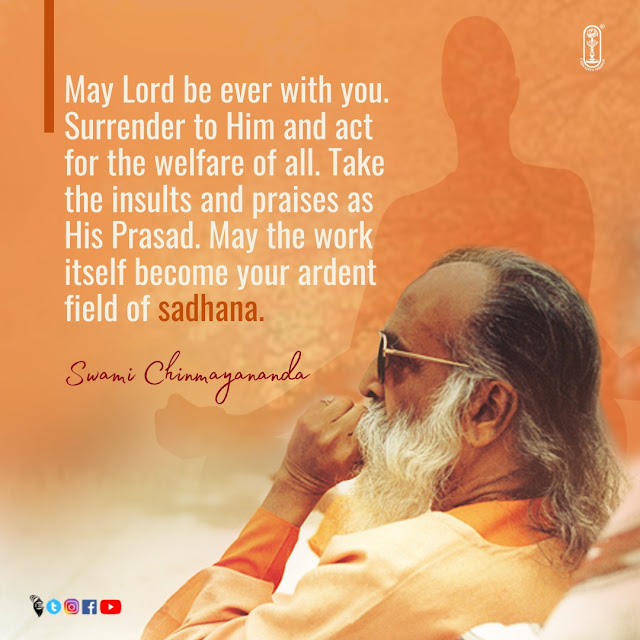AITAREYA UPANISHAD : 3. “By a Peasant for the Peasant” : Composed by Rishi Maheedasa Aitareya.
=============================================================
============================================================
Series of 10 Lectures : by SWAMI ADVAYANANDAJI Acharyaji, 15th Batch Vedanta Course
AT SANDEEPANY SADHANALAYA, POWAI, MUMBAI February 15th – February 23rd, 2013
============================================================
Tuesday, March15, 2022. 20:00.
AITAREYA UPANISHAD : 3 Parts, 6 Chapters, 33 No. Mantras : “By a Peasant for the Peasant” by Rishi Maheedasa Aitareya
============================================================
Adi Shankaracharya, Swami Sivananda, Swami Tapovanji, Swami Chinmayananda.
SERVE LOVE GIVE PURIFY MEDITATE REALISE
=============================================================
Introduction : PART - 1 : Chapter One : THE THEORY OF CREATION
1.3 -The Style of Aitareya Upanishad
==============================================================
Here begins the Chapter 1 of Part 1
Mantram 1.1: Before Creation Began…
1 Om atmaa va idam eka eva agra aset; 2 na anyat kinchina mishat. 3 Sa ekshata, lokan nu srija iti.
---------------------------------------------------------------------------------------------------------
Translation :
1 Om atma va idam eka eva agra aset; = Om. Verily, this one Atman alone was existing in the beginning.
2 na anyat kinchina mishat. = Nothing else whatsoever was there that winked.
3 Sa ekshata, lokan nu srija iti. = He envisioned : " I shall create the worlds.”
----------------------------------------------------------------------------------------------------------
HERE BEGINS THE Aitareya Upanishad’s amazing theory of Creation.
1 Aatma: A period is visualized when there was just nothing at all, except the Atman. The Roodhi or accepted meaning of Atman is “inner”, the “essence”, the “heart of”. The Atman stood alone as the Adhishthana or support for everything that followed.
Agra: “before”. To say “before Creation” is itself a misnomer – it immediately accepts Time, but there was no time before creation, for Time is also a creation. We cannot plot Absolute Existence on an axis of Time.
Thus, one after another, we encounter logical conundrums such as these. Perhaps this is inevitable. This is the case with all theories of creation. They can never be true, as creation is ‘unreal’, a mere superimposition upon the Real. Every theory is only a teaching aid, and has to be discarded when its purpose is served.
Eka Eva: “It alone is”. Pure Existence just “IS”, and nothing else is with it. It is called Pratyag Atman, the inner Self of Being. Pure Existence is very hard for us to imagine. But Acharyaji helped us along:
“Before creation, there was just Existence alone, without any names and forms. There was stillness everywhere without even the word ‘stillness’ being there. Existence was there, without the word “existence” being there! Nothing in name and form was there.
“Before all the pots were made, there was just mud. Before all the ornaments were made, there was just gold. Before any wave came into being, there was just the water of the ocean . . . In the same way, before all this variety was created, there was just pure Atman!Atman is the material from which creation was produced.”
2 Mishat: “winked”. This is a stroke of poetical beauty, to express the fact that although nothing at all, no living being, was present at the time, this Existence was not ‘dead’. It was the only thing present and was capable of “winking”! So it was actually ALIVE. It was full of promise.
The word ‘winking’ suggests a curiosity to be something, it suggests a playfulness of wanting to create something just “for the fun of it”. It perfectly represents the philosophical idea that this world is the Lord’s Leela or Play or sport.
Who was the Lord so mischievously “winking” at? All eyes turn towards Maya, the cosmic Shakti of the Supreme Brahman, playing the role of a charming temptress. This was the first “Love Affair” in the Universe!
Acharyaji described this line as a “self-cancelling statement”. The implication is that every word, in trying to describe that indescribable state, cancels itself. It is as if the word is trying to whisper something into our ears about this Moment of Wonder, but fades off the moment it tries to do so – it just cannot express the inexpressible, and cancels itself! For this reason this verse is called the Vastu Sangrah, the subject of this text.
Adhyaropa – A Theoretical Superimposition
3 No sooner does the Supreme Being have this thought, than creation begins, virtually instantaneously. The speed has no significance of its own. It is not to be imagined that this was like a magic performance, although it sounds like that. The Power of the Will of the Supreme Atman is being illustrated by using ‘speed’.
Adhyaropa is the technical term for superimposition of the unreal on the Real. This is a theoretical superimposition for the purposes of illustrating the essence of creation. It does not refer to the Ignorance by which we cannot distinguish the real from the unreal in actual life. Adhyaropa is thus a theoretical exercise to assist us in our understanding of the Truth.



.jpg)

Comments
Post a Comment